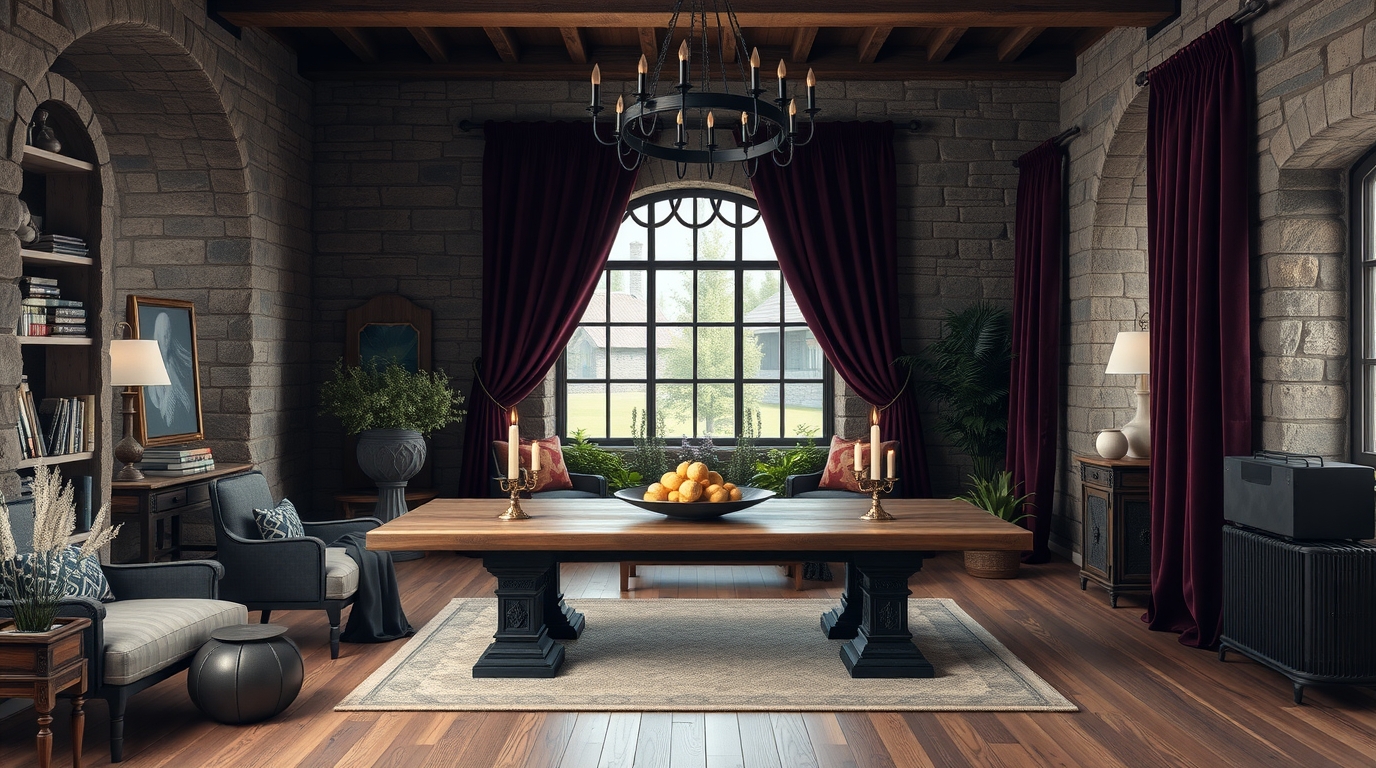It starts with a candlelit dinner shared under stone arches. On the table sits pewter cutlery, heavy goblets, and bread torn by hand. Around the room tapestries hang loosely, while the sound of lute music drifts from a hidden speaker. This is not a castle in Europe. It is a suburban home in 2025, styled by people drawn into one of the strangest and most captivating lifestyle trends of the moment: neo-medievalism, also known as Castlecore.
The movement is not about dressing in costumes for a weekend fair, although those events are part of its ecosystem. It is about taking elements of medieval life and reimagining them for the present. Kitchens decorated with rustic stone tiles. Bedrooms lit by wrought iron chandeliers. Gardens turned into small herb sanctuaries. Even food plays a role, with recipes inspired by historical manuscripts appearing in blogs and YouTube videos.
Why this sudden fascination with the Middle Ages? One answer lies in escapism. Modern life feels rushed, digital, and often overwhelming. Medieval imagery offers the opposite: slower rhythms, heavy objects, and rituals that feel rooted in community and survival. The castle aesthetic promises security in a world that feels uncertain. A thick wooden table is more than furniture. It is a symbol of permanence.
Another reason is cultural storytelling. Streaming shows and video games built around medieval fantasy worlds have dominated popular culture for years. Viewers immerse themselves in kingdoms, knights, and quests, then want to bring a piece of that world into their own homes. What was once just fandom has turned into design and lifestyle choices.
Social media has amplified Castlecore in unexpected ways. Pinterest boards feature endless inspiration: dark velvet curtains, candle walls, medieval-inspired banquets. TikTok creators film themselves making honey mead or weaving baskets in backyards, captioning it as reclaiming old skills. Even fashion influencers are joining in, pairing corset-inspired tops with modern denim or layering flowing gowns with leather boots.
Skeptics dismiss the movement as nostalgic play-acting. They argue that life in the real Middle Ages was harsh, full of disease and hardship, not romantic dinners under candlelight. But trends are not about historical accuracy. They are about what a certain era represents in imagination. Medieval imagery symbolizes power, craftsmanship, and mystery. That is what people are craving, not the reality of that time.
There is also an undercurrent of sustainability in Castlecore. The preference for handmade, heavy-duty objects over disposable decor mirrors a cultural rejection of throwaway consumerism. A wrought iron candleholder will last longer than a mass-produced plastic lamp. Herb gardens require patience and care but offer real food and fragrance in return. People are drawn to this slower, more physical way of living because it feels like an antidote to the fast-paced digital grind.
Commercially, the trend is thriving. Online shops sell medieval-inspired furniture, tapestries, and clothing. Tourism boards promote castle stays and medieval festivals. Even luxury brands are weaving in motifs of knights, shields, and crowns into their collections. The aesthetic has grown from niche internet communities into a visible market.
Neo-medievalism may not last forever, but it reflects something real about culture in 2025. People want spaces that feel safe, rich with meaning, and connected to tradition. They want to believe that in a world of constant change, they can still anchor themselves with stone, wood, and firelight. Castlecore offers that fantasy in a way that feels comforting rather than old-fashioned.
For now, the medieval world has returned not in history books but in living rooms and TikTok feeds, bringing with it a strange but compelling vision of how the past can shape modern life.
